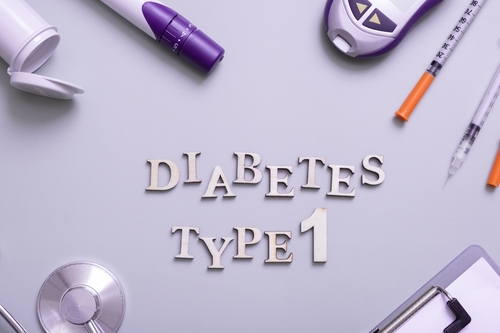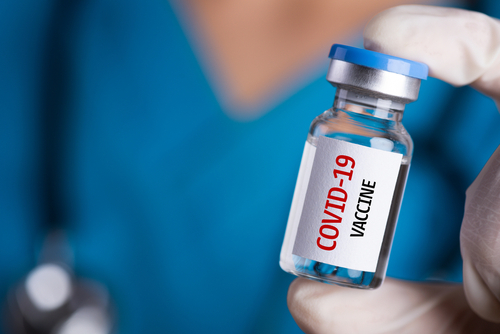Dr. Rollie Carlson, CEO, Immunexpress: Providing RAPID Detection for Sepsis
By Rob Dillard - Last Updated: May 10, 2024September is Sepsis Awareness Month. Sepsis, which is a potentially deadly condition that stems when the body’s response to infection triggers inflammation throughout the body, affects around 1.7 million people per year, resulting in around 270,000 deaths annually. Cases of sepsis only increased during the COVID-19 pandemic.
The company Immunexpress, in partnership with Biocartis, developed the SeptiCyte® RAPID test, which is a FDA-cleared, fully-automated host-response assay that can discern sepsis from non-infection inflammation in patients suspected of sepsis.
DocWire News spoke with Dr. Rollie Carlson, CEO of Immunexpress, to learn more about this cutting-edge technology, and how it can quickly and accurately detect sepsis, and lead to faster treatment.
DocWire News: Can you give us some background on yourself?
Dr. Rollie Carlson: Thanks Rob, for having me on your show. I’ve been in the healthcare biotech industry for over 25 years. I started at Abbott Laboratories, where I learned the trade. I had responsibility for both pharmaceutical and diagnostic companies. I left Abbott and I’ve been the CEO of three different biotech companies, both private and public. I’ve been a founder of two companies, both in diagnostics and in therapeutics.
So, I’ve really had the privilege of working with leading scientists and developers for novel genomic tests, and that’s been translated to over 20 products and solutions for both oncology, genetic, and infectious disease testing. I’m currently the CEO of Immunexpress, which is a small, but growing private company based in Seattle.
Tell us more about your company, Immunexpress.
Yeah, I’d be happy to. So Immunexpress is a molecular diagnostic company that’s mined the human genome. We’ve been looking for the genetic response to infectious disease, and we discovered that inflammation caused by a pathogen infection can actually generate a signal very, very early in blood. And so, what we did was we were able to look at… And we thought that these signals could be very useful for evaluating pathogens that could lead to early and fast onset fatal diseases, such as Ebola and sepsis. We focused on sepsis, and we assembled a bioinformatics and product and clinical development team, and then we collaborated with leading medical institutions, both in the U.S. and Europe, to evaluate and develop a sepsis diagnostic test.
The U.S. FDA recently cleared Immunexpress’ test for sepsis. Tell us about that test and how it works.
Absolutely. But first I’d like to really talk about what sepsis… And the dilemma that we have, because sepsis is a life-threatening organ failure that’s due to a dysfunctional immune system that’s caused by the pathogen. And it’s very easy… What happens is that we have a pathogen which will induce a cytokine storm, the body responds to that by over-inflammation, you start having leakage of blood vessels and ultimately organ failure. And with sepsis, when you’re at the point where septic shock or you have organ failure, it’s pretty easy to detect, but unfortunately at that stage, you really have an issue as far as being able to improve mortality or morbidity. The key is being able to detect it early, but to detect sepsis early, it looks like other etiologies. And there’s also what is called systemic inflammatory response syndrome, or SIRS, that looks like sepsis in the early days. Could be tachycardia, it could be fever, etc., along those lines. So, it’s been very difficult for one to develop a test that’s been associated with early detection of sepsis.
What we were doing was really looking at determining whether or not we could be able to do that at early onset, in the first clinical signs. And the issue that’s really important with that is that if one does have sepsis, as each hour goes by, mortality risk increases by 8%. So, you really need to get on this very, very quickly. But unfortunately, in the industry, the gold standard is using blood culture, and blood culture takes 20 to 24 hours. And if you do get a result, you may not have a result in over 80% of the cases. There are specific pathogen detection tests, but those can take six to 12 hours, and they’re only built for the ones that they’re built for detecting, such as bacteria or virus.
So, our approach was trying to look at the human host response for pathogen detection. And what we’ve found was that we could see that there were genes that were expressed in blood, on white blood cells that attack the pathogen that are activated, whether there’s a pathogen there and leading to sepsis or there’s other genes that are activated, if there’s no pathogen and it actually represents that SIRS, or systemic inflammatory response syndrome. So, what we found was this was independent of the pathogen. We could detect sepsis whether it was bacterial, viral, fungal origin, and we could be able to get a result in about an hour.
And this is really important, because what physicians are faced with is they have to look at a number of different clinical inputs, none of which are specific to sepsis itself. And they have to put a compendium together and deduce that it is sepsis at early stage. And large studies have shown that even when physicians admit and treat a patient in the ICU for sepsis, that 45% of the time there actually isn’t sepsis. So, then you’re having people treated that shouldn’t be. Our test, we get a result within an hour. We measure the probability of sepsis, whether it’s low or high. And if it’s low, then it’s ruling out sepsis and you shouldn’t be able to administer antibiotics. If it’s high, you should get on that patient right away and be able to treat them for sepsis.
With the COVID-19 pandemic, the incidence of sepsis has increased. Tell us about this and about the research Immunexpress is doing in this area.
Absolutely. And it’s very relevant for our technology. In the U.S., there’s about 1.7 million patients treated for sepsis, and the mortality… this is pre pandemic… was about 270,000 mortalities per year. And unfortunately, what we found with the pandemic, WHO has estimated that about one third of the deaths that are associated with COVID-19 are associated with COVID-19 viral sepsis itself. So, we were conducting our clinical trial for being able to get FDA clearance… We wanted to make sure that we got COVID patients, which was on the tail end of our clinical trials. And we did, and we determined that certainly we did detect COVID-19 viral sepsis, and in each case we were a hundred percent accurate with those patients.
And furthermore, we obtained a grant from the Biomedical Advanced Research and Development Authority, BARDA, which actually was to look at our technology as it relates to COVID and COVID severity. BARDA, you may know, is associated with bio-threats and evaluating those, and certainly was relevant for the pandemic. And what we found was not only SeptiCyte® RAPID could be able to determine whether or not it was COVID-19 sepsis, but we found that we could predict that… When a patient which is COVID positive arrives at a hospital, there are symptomologies, but not severe at this point in time, that we could predict which patients would progress to critical or severe disease versus those who would be moderate or not. And so that… very useful, as far as the ability of who should go to the ICU or not and get on top of that patient to be able to treat them appropriately.
Aside from triage of COVID-19 patients, what other areas is Immunexpress studying to expand access to SeptiCyte® RAPID in the future?
Well, there’s a number of applications, but I think that one of our highest priorities is to be able to prove the utility of the test in the pediatric population. Our initial indication is for adults. In the U.S., there are 200 children per day being treated for sepsis, and there’s high mortality: roughly 7,000 per year. And unfortunately, there’s many, many more kids who have had sepsis, and they have what is very similar to a COVID long syndrome, where there’s long morbidity in recovery, on both neurological and physical attributes.
And so, we’ve been conducting… We’ve got pediatric clinical trials, both in Australia and here in the U.S. And so that certainly is one area that we want to do, is be able to expand our indication for kids. We also have been looking at using the test for monitoring patients after they’ve been diagnosed with sepsis, and then they’re treated… And then to determine whether or not those patients have actually recovered, and they truly do not have sepsis. And to be able to measure that at discharge, because the number one readmission category for patients in the U.S. is, again, sepsis patients who have been discharged, and they come back to the hospital within 30 days because they have sepsis itself.
And then in our pipeline, we have an exciting product, which is SeptiCyte RAPID Plus. And it’s the test that we have for… SeptiCyte RAPID for sepsis and SIRS, and then if it is indeed sepsis, then we can determine whether it’s a bacterial or viral origin. And if you have that determination, then you’ll know which way to treat immediately within that one-hour sort of window, where you could be able to… Should you go onto antibiotics, or should you go onto antivirals? And there’s many tools now, because of the pandemic, that we can use to have that guided therapy.
Any closing thoughts?
Yes. I mean, we’re looking forward to commercially launching the test now that it is cleared. We think that the uptick and early evaluation and demonstration of how this could help in CMS guideline management and in compliance is very useful. The final thing I’d like to say, just for your audience, is that diagnostics… I think they’ve been proven as far as the value in the COVID pandemic. They account for 5% of what hospital costs are overall, and 2% of Medicare overall costs. However, there’s challenges with that. And a lot of that is associated with the lack of appropriate reimbursement. In therapeutics… There’s no capitation on therapeutic pricing that there certainly is in diagnostics. And I think to have innovative technologies, such as Immunexpress and other companies that have diagnostics, they can try… Over 70 or 80% of therapeutic decisions with that low contribution cost factor should be recognized. And that will certainly improve patient outcomes with the combination of guided therapeutics through diagnostics.







 © 2025 Mashup Media, LLC, a Formedics Property. All Rights Reserved.
© 2025 Mashup Media, LLC, a Formedics Property. All Rights Reserved.